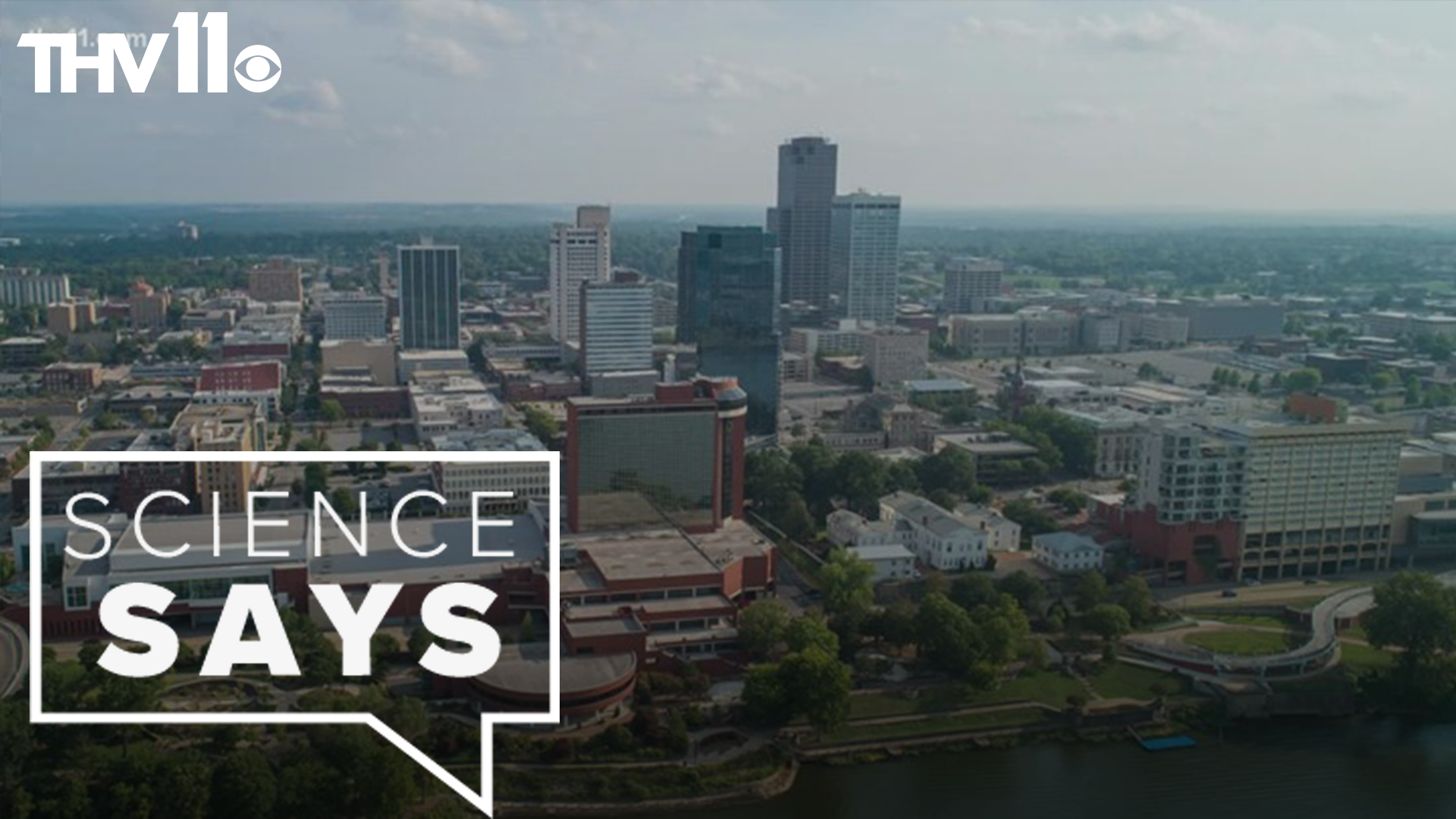LITTLE ROCK, Ark. — An urban heat island is a phenomena in where urban areas experience significantly warmer conditions compared to their surrounding rural regions.
There are a few factors that help drive this such as radiation, convection, heat storage or even human-generated heat.
The pavement and buildings in urban areas are able to store more heat than the surrounding soil and vegetation.
Albedo is defined as sunlight or radiation that is reflected by a surface. We know that light-colored surfaces can reflect sunlight, meaning they have a high albedo, such as snow and ice.
Darker surfaces, such as rocks or concrete, tend to absorb the heat, meaning they have a lower albedo. This is especially impactful in cities that have higher humidity, as it magnifies the impacts of the temperatures.
Convection, or the movement of heat between areas of different temperatures, is the main driver behind the urban heat island effect during the day, with heat storage from man-made structures the main contributor at night.
Heat is the number one weather-related killer. Rising temperatures due to climate change is a major concern in the future for these urban heat islands, as they will only amplify heat waves and its impacts on human health.

